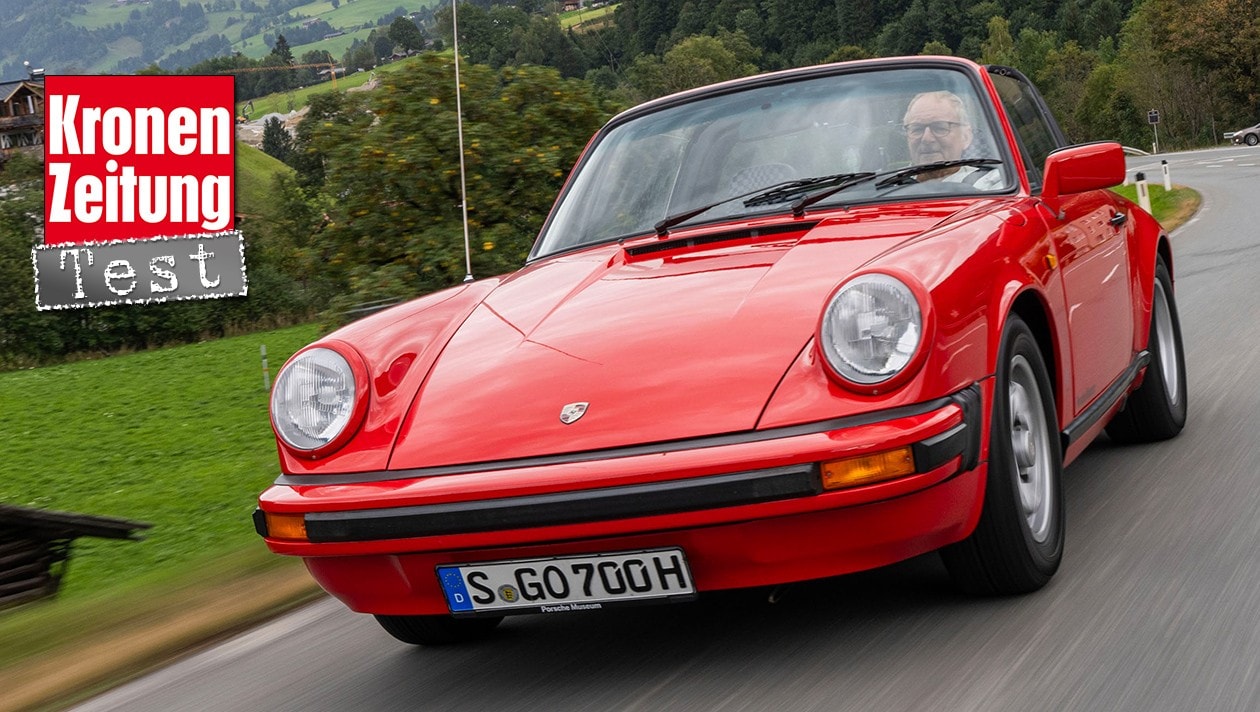For 60 years, the Porsche 911 has been the epitome of the (at least German) sports car. All eight generations have the rear engine in common. Is this the secret of the icon’s success? Hardly likely. The true essence and unique selling point is different, as I found out on a trip with all eight generations of the Porsche 911.
The whole tour was, to a certain extent, emblematic of the history of the 911: lots of sun and, in the middle, fog and rain. On the Großglockner High Alpine Road I drove into the Fuscher Törl in the sun – and came out again on the Salzburg side in the fog. Downright wildly romantic. And of all things in the Porsche 911 of the 996 series. Coincidence? Perhaps more emblematic of the economic crisis that Porsche slid into in the 1990s. Rescue and turning point The contracts for the sale to Mercedes had already been drawn up when company boss Wendelin Wiedeking pulled the Boxster out of the hat and put the papers in the shredder instead of with them Signature submitted. This open two-seater was literally torn out of the Zuffenhausen company’s hands from 1996 onwards – and it was practically identical to the Porsche 996 right down to the A-pillar, the development of which he helped finance and thereby made possible. Initially ridiculed as a fried egg Porsche because of the headlight design, The modern era of the 911 practically began with the 996 in 1997. From this generation onwards, the pedals no longer protruded from the ground (like they used to on the VW Beetle), but came from above. Since this generation, the traditional five round instruments have merged into one another. Above all, the traditional boxer engines have been water-cooled since then – the four-valve cylinder head introduced due to emissions regulations made this necessary. This also changed the character: no 911 engine had ever run so smoothly.The good old daysEspecially the original 911 (1963-1973) and G-model (1973-1989) had a characteristic, rough sound that every child would recognize straight away recognized. These two remain the most popular classics today, although ergonomically they are, well, let’s say difficult for tall riders. The steering wheel is too far away and the gear lever is positioned so that you have to operate it under the back of your knee. The gearbox itself reminds me vaguely of the one in the VW Beetle I once had, but it was much easier to shift. In the Porsche 964 (1988-1994) the steering wheel was still too far away. The gearshift lever was already positioned favorably, although my test sample was equipped with the not particularly convincing four-speed automatic transmission. In the 993 (1993-1998) the back of my knee no longer had any contact with the gearshift lever. It was the last water-cooled 911 and its shape also had a closer relationship to its ancestors. But it also stood out with its aluminum multi-link rear axle. The good new times With the 996, the 911 emancipated itself from its rough predecessors. It grew significantly (18.5 centimeters!) and the model range became wider (including the first GT3, co-developed by Walter Röhrl). Although larger and more luxurious, it weighs around 50 kilograms less than its comparable predecessor. At 1450 kg, the all-wheel drive 2001 4S still seems almost light on its feet. I switched from the current 992 Turbo Cabrio, a 580 hp epitome of power and luxury, which has nothing cumbersome despite its 1.7 ton curb weight. The 997 (2004-2012) comes with the PASM active chassis and dual clutch transmission, as well as variable rack and pinion steering Steering ratio. The 991 (2011-2019) brought active aerodynamics, variable damping and a manual seven-speed gearbox, and the interior was digital. And what do they have in common? The character of the Porsche 911 has changed over the years, from a wild, light sports car an incredibly fast luxury car that can make an ambitious driver believe that he is an expert on the wheel. This brings us closer to the essence of the 911, i.e. the positive characteristic that connects them all. It’s not the rear engine. They all have it, but it’s not good for driving behavior per se because it pushes the balance backwards. In fact, it’s this incredibly sensitive steering that the Porsche 911 has had since the beginning. You can feel what’s going on on the asphalt at every moment. Almost as if eyes, ears and hands were directly connected to the wheels. Of course, in the early years, cornering quickly was a lot more manual work and therefore more strenuous than in newer generations, and of course the technology has developed further. But this very special feeling remained. The only generation that I couldn’t drive myself was the F model, the original 911. Porsche only provided one RS model as the lead vehicle, with Porsche works driver Richard Lietz (including overall winner of the 24-hour race at the Nürburgring in 2018) at the wheel. He knows the Porsche 911 inside out and has spent his entire racing career on various models in the series disputed and partly developed. It confirms my impression of the original 911 too. And what’s more: “That’s even the case with racing cars. They are sometimes difficult to drive because of their weight distribution, but the steering makes it easier. Drivers of other brands also see it that way. They may not be able to cope with the driving behavior, but they are all thrilled with the steering.” So it’s also very clear to Lietz: “The essence of all 911s is the steering.”
source site-13
